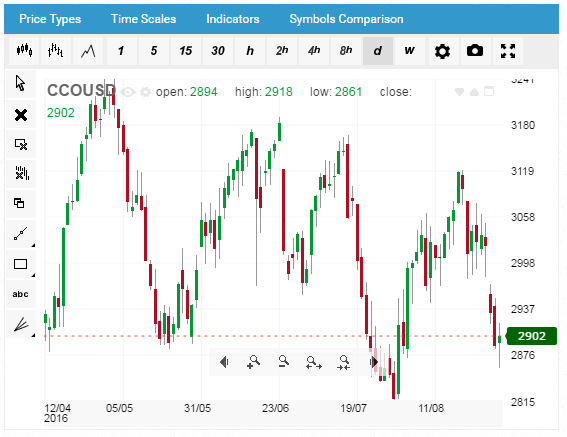The cocoa plant that can grow to 15-20 feet tall can only grow in regions 20 degrees north or south of the equator. Given these circumstances very few places on earth have the right climatic conditions. West Africa is one of these places. As a result this region has become a dominant player in cocoa production. The Ivory Coast, Ghana and Indonesia in the asia pacific region account for 70% of the cocoa market.
There are two types of cocoa plants, Criollo and Forastero. The Criollo is more sensitive to climate fluctuations and can produce a lower yield as a result. Therefore the two plants have been blended to produce a third plant called Trinitario, which now accounts for 20 percent of all production.
On average, cocoa trees take five years to reach maturity and bear fruit at which only 20 pods might be available for harvest. Given 10 pods produce 2.2 pounds of cocoa, this means that the average tree yields a little over 4 pounds of cocoa.
Factors that can influence the price of cocoa are:
- Cocoa flowers are pollinated by midges, small flies or by hand. As a result global climate change can have an effect on midge flies.
- Politics unrest in countries such as the Ivory Ghost, Ghana and Indonesia will have an impact.
- Global warming. Cocoa trees need temperatures between 21-32 degrees celsius for optimum growth. Lower temperatures can be fatal to the plant.
- Three companies control most of the world’s chocolate, Barry Callebraut, Cargill and Archer Daniels Midland Company. As a result companies such as Mars, Cadbury and small chocolatiers are beholden to these three.

Cocoa (CCO) Contract Details:
| Currency | Price per | Standard Contract Size | Pip Value / contract |
|---|---|---|---|
| USD cents | Metric ton | 10 metric tons | USD 0.10 |
Trading hours: Cocoa trades daily Monday to Friday from 09:45 GMT and closes at 18:25 GMT. Spreads are usually higher during out-of-business hours.
For more information on Cocoa and other related trading products, go to our website, easy-markets.com.







